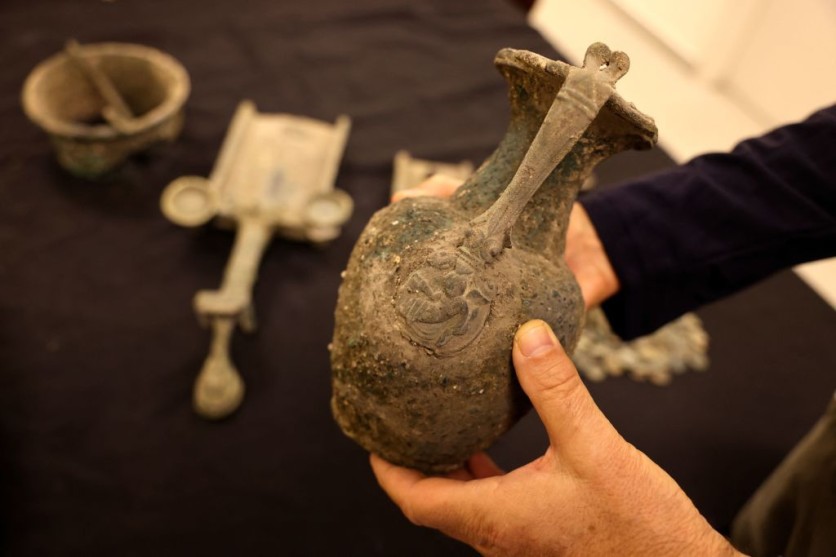A "spirited" discovery has emerged in southern Spain after a 2,000-year-old Roman funerary urn was found to contain the oldest wine ever preserved in liquid form.
According to CNN, this finding happened during home renovations in Carmona in 2019, and subsequent analysis by scientists from the University of Cordoba unveiled the contents' true nature.

Oldest Wine in Liquid Form Found in Spain
José Rafael Ruiz Arrebola, a professor of organic chemistry at the university, led the study and explained that the urn contained cremated remains, burnt ivory likely from a funeral pyre, and approximately 4.5 liters of reddish liquid.
Upon opening the urn, the team was shocked to discover the liquid substance. Through chemical analysis, the team identified the liquid as wine, which is known for evaporating quickly and being chemically unstable.
The preservation was attributed to a hermetic seal that prevented the wine from evaporating, although the exact nature of this seal remains unclear. The team conducted further chemical analysis and identified the liquid as white wine.
Ruiz Arrebola said this was confirmed by the absence of syringic acid, which is found only in red wines. Further analysis revealed that the wine's mineral salt composition was similar to the fino wines currently produced in the region.
This discovery potentially surpasses the previously oldest known liquid wine, the Speyer wine bottle found in Germany, which is believed to be around 1,700 years old. However, unlike the Spanish find, the age of the Speyer bottle has not been determined through chemical evaluation.
The urn was one of six found in the mausoleum, each containing cremated bone remains and valuable artifacts, including a gold ring. These items suggest that a wealthy family constructed the mausoleum.
Unfortunately, due to the cremation process, any DNA that could have provided more information about the individuals has been destroyed, making it impossible to determine if the six people were related.
Ancient Roman Funerary Practices
The discovery in Carmona provides an unprecedented glimpse into Roman funerary practices and the use of wine in burial rituals. The preservation of the wine in liquid form is extraordinary, as ancient wines typically left behind only residues or traces.
The researchers employed advanced techniques such as inductively coupled plasma mass spectrometry (ICP-MS) to analyze the mineral salts and high-performance liquid chromatography-mass spectrometry (HPLC-MS) to determine the polyphenols in the wine.
These methods confirmed the wine's identity as white wine, further adding to the discovery's significance. The research team plans to continue their study to identify which modern-day local wine most closely resembles the ancient wine.
The study's findings were published in the Journal of Archaeological Science: Reports.
Related Article : Archaeologists Step Back in Time by Reconstructing Roman Gateway During Britain's Invasion

ⓒ 2025 TECHTIMES.com All rights reserved. Do not reproduce without permission.

![Best iPads that Students Can Use in School [2025]](https://d.techtimes.com/en/full/461431/best-ipads-that-students-can-use-school-2025.jpg?w=184&h=103&f=516289300e12e9647ef3d5bd69f49b70)


